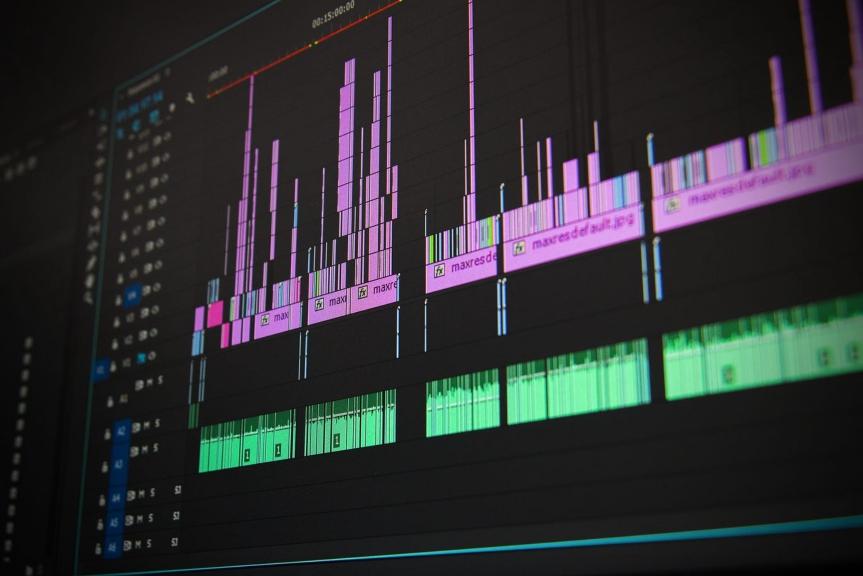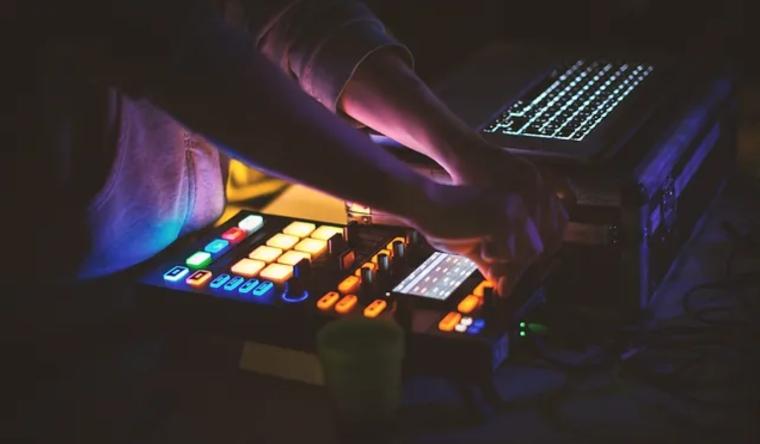As a seasoned DJ and mixing aficionado, I’ve observed that novice producers often embark on their musical journey by crafting basic rhythms. In music production, the art of beat-making isn’t just a skill – it’s a potentially profitable profession. Yet, for those just starting out, navigating even the simplest of beats might appear somewhat elusive. The process of creating unique beats can initially seem more daunting than necessary.
In my latest piece, I dive into the essentials of a compelling beat. I’ll guide you through the entire process of beat construction, from the initial concept to the polished final product.
Tools You Need to Make a Beat
A beat-making adventure requires just a few essential tools to set the stage for your creative endeavors. These are namely the following:
- Audio samples library
- DAW
- MIDI controller
Remember, it’s not about having a vast arsenal but the right instruments that resonate with your style. As a seasoned mixer, I’ve found that simplicity often leads to the most profound musical expressions.
Audio Samples Library
Building your beat-making skills starts with a solid set of audio samples, which are crucial for shaping your music’s character. The samples you select play a big role in defining your unique sound. I’ve found that while creating your own samples adds a personal flair, it can be quite a task. That’s where platforms like Splice or Sounds come in handy. They offer a vast array of sounds, allowing you to explore and experiment effortlessly. From my experience, these resources are invaluable for finding that perfect sound without spending hours recording and editing.

DAW
A Digital Audio Workstation (DAW) serves as your virtual studio for recording, editing, and producing beats. The market offers a diverse range of DAWs, each with unique features, so it’s worth taking the time to discover the one that aligns with your creative style. Such software empowers you to layer various instrumental tracks, paving the way for your distinct beat composition.
Take Ableton Live 11, for example, renowned for its exceptional MIDI integration. In Ableton, every element can transform into MIDI, simplifying the process of tweaking and controlling every aspect of a track. We’ll delve deeper into the wonders of MIDI in a later section.
MIDI Controller
MIDI pad controllers are favored by DJs, recording artists, and studio engineers across various music genres. They enable you to trigger custom sounds and samples, ranging from basic effects to a one-handed virtual drum kit. While you can set up a drum groove by inputting MIDI notes directly into your DAW, actually playing out the drum rhythm fosters a deeper understanding of rhythm creation.
Feeling the rhythm, rather than just seeing it, enhances your ability to craft beats that truly resonate with listeners. That’s the reason I always suggest investing in a dedicated MIDI controller that easily connects to your computer, bringing your sample-triggering capabilities to life.

Chances are, you’ll discover software or methods to tailor controls to your DAW, such as employing knobs to fine-tune effects. Typically, you’ll have a couple of faders for mixing and, if you opt for a higher-end controller, a selection of buttons, and beat pads—-these are the features I find myself using the most. You can certainly stumble upon some top-notch controllers equipped with keys, faders, and beat pads at reasonable prices online, enhancing your music-making experience. Take the Roland 202, for instance, which comes with an integrated drum machine. For everything else, the pads are perfect for slicing and dicing your beats to perfection.
Crafting Your First Beat: A Beginner’s Guide
I’m here to guide you through the fundamental stages of beat creation. Together, we’ll explore each step, ensuring you grasp the essentials of crafting a rhythm. Let’s embark on this journey, transforming your musical ideas into compelling beats.
Step 1: Establishing Your Musical Mood
Prior to diving into beat-making, take a moment to contemplate the mood you aim to create. This consideration greatly influences your choice of sounds and assists in finding the perfect tempo for your project. Remember, the tempo can drastically alter a beat’s ambiance, so it’s crucial to pick one that aligns with your desired genre and style.
Step 2: Crafting Your Bassline
Starting with the bass line is a technique I favor, as it lays a solid foundation for the beat’s rhythm. The bass not only introduces a groove but also adds a tonal dimension, sketching out the underlying chord progression. It acts as a guide, leading the way for other elements to harmoniously blend in. This approach ensures that the core of the beat is both rhythmically and melodically cohesive. Moreover, it allows for a seamless integration of other instruments, creating a well-rounded and dynamic beat.

Step 3: Adding Drum Elements
After laying down a captivating bass line, my next step is introducing the primary drum elements. These usually consist of the kick, snare, and hi-hats. Most beats benefit from a higher-pitched drum sound accentuating the groove’s flow. It’s essential to remember that the rhythm of any high-pitched percussion sets the groove’s overall vibe, often guiding the rhythmic patterns for vocalists or rappers. This high percussion can range from a solitary closed hi-hat or a single percussion instrument to an intricate ensemble of interweaving percussion sounds.
Step 4: Adding Melodic Components
After laying down the rhythmic base, I find that adding a melodic element truly elevates the track. The choice of melody, steeped in personal creativity, should seamlessly blend with the bassline’s harmony. This choice greatly varies, shaped by the genre I’m delving into. In my experience, whether it’s a gentle piano melody or a vibrant synth line, the key is to ensure it complements the groove. It’s this melodic layer that breathes life into the composition, weaving together a sonic tapestry that captures the essence of the beat and my artistic vision.

Step 5: Completing the Musical Texture
Once the drums, bass, and melody are in place, I enjoy enhancing the track by filling in any empty spaces with additional sounds. While these extra elements aren’t crucial for maintaining the beat’s core rhythm and feel, incorporating foley or sound effects can add an exciting twist. Whenever I sense my beat needs a fresh spark, experimenting with unconventional sounds often introduces a new layer of auditory intrigue. It’s important, though, to ensure that any pitched sounds align with your song’s key, maintaining musical coherence.
Step 6: Broadening the Beat’s Dimensions
With all the elements of my beat arranged, the next phase is to evolve it into a complete song. My approach involves looping the beat multiple times in my DAW, then strategically removing different elements across various sections. This technique introduces subtle variations, keeping the beat’s core repetitive yet dynamic. At this stage, integrating additional transition effects can infuse more energy into the beat, ensuring it progresses smoothly and retains the listener’s interest without becoming monotonous.

Consistent Practice Makes Perfection
Once a DJ program is up and running on your computer, the real magic starts with getting hands-on and diving into practice. Learning the ropes of the program is just the beginning—-it’s designed to get you started on beat-making in no time. The deeper challenge, and the most rewarding part, lies in investing your energy in crafting beats that have depth and character. This journey into beat creation demands patience and persistent practice. But, with a combination of the right tools, a dash of passion, and a focus on beats, there’s nothing stopping you from producing rhythms that are both innovative and captivating.
Final Thoughts
Crafting beats, in my experience, is not just a hobby but a deeply rewarding journey. The beauty of beat-making is that it can encompass any sound or vibe – the limit is only your imagination. If you’re truly passionate about this art, remember, dedication is key. Putting in those transformative 10,000 hours in the studio has been a game-changer for me. And don’t forget, networking with artists and industry insiders is just as crucial. Start today, and you’ll be amazed at where your beats can take you.


